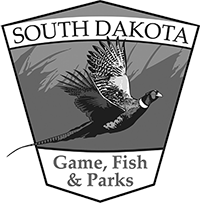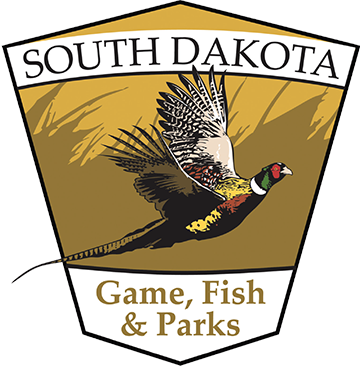Bat Sampling and Collection Protocol Guidelines
The overriding intent of this document is to provide for the safety of individual bats and for the long-term stability of bat populations in South Dakota. State Scientific Collector’s Permits will be issued only for research and monitoring activities that are compatible with this overriding intent.
Components of this document are arranged as guidelines or requirements. The permittee should assume that deviations from requirements will not be approved unless justified to the satisfaction of the SD Department of Game, Fish and Parks.
Requirements:
- Applicants must provide evidence that they are familiar with the desired sampling techniques and with identification of bat species likely to be found in the study area. This requirement applies to all parties that will operate under the Scientific Collector’s Permit. The Scientific Collector’s Permit cannot be transferred or delegated to individuals not covered under the Permit.
- In addition to completing the Scientific Collector’s Permit applicants must submit a copy of their study or monitoring plan. At a minimum, the plan should include species of concern, number of individuals to be collected or handled, study area and duration, techniques, personnel, and eventual location of specimens or tissues.
- Mist nets must be attended at all times. Harp traps must be checked frequently to minimize effects of predation, weather, absence of mother from pup, etc.
- No collection or handling of bats will be allowed at hibernacula. Surveys or other activities at hibernacula will be reviewed on a case-by-case basis.
- Live bats may not be held overnight without permission of SD GFP.
- No surveys will be allowed for western big-eared bats (Corynorhinus townsendii) at known maternity/nursery roosts. If a researcher suspects that western bigeared bats are using a site as a maternity/nursery roost, surveys must end immediately, and SD GFP must be notified. In general, surveys of maternity/nursery roosts of all bat species are discouraged.
- Applicants desiring to handle bats must submit proof of pre-exposure vaccinations for rabies or a recent titer check.
- Applicants desiring to band bats must comply with established South Dakota protocol for band type, placement, color, and numbering system. Only appropriately-sized alloy lipped bands designed specifically for bats will be used in South Dakota.
- In general, no collection of specimens or body tissue will be allowed of bat species monitored by the SD Natural Heritage Program. If individuals of monitored species are captured, they will be released immediately at the point of capture. Any unintentional collection of individuals of monitored species will be reported to SD GFP within 72 hours and surrendered to SD GFP.
- Collection of any bat species must be approved by SD GFP. Collection of more than two specimens of nonmonitored species must be justified within the context of a study or monitoring plan. This plan should include a description of the method of killing and a description of availability of tissue or specimens for examination or use by other researchers.
- Bat survey or monitoring activities should not alter or damage natural or artificial sites.
- Only personal, battery-powered or non-heat-generating light sources will be used within roosts. No open-flame torches, smoke-producing instruments, photography equipment, carbide lamps, or toxicants will be taken into roost sites.
- Permit holders will notify SD GFP of the location of any maternity roosts discovered during study or monitoring activities.
- All scientific collector’s permit holders shall follow the National White-nose Syndrome Decontamination Protocol.
Guidelines:
- Applicants should be familiar with humane methods of removing other nocturnal animals likely to be captured in bat sampling equipment.
- Applicants should be familiar with property boundaries in their selected study area and should seek permission from the appropriate public or private landowner.
- Applicants should notify public or private landowner when survey activities will be conducted.

